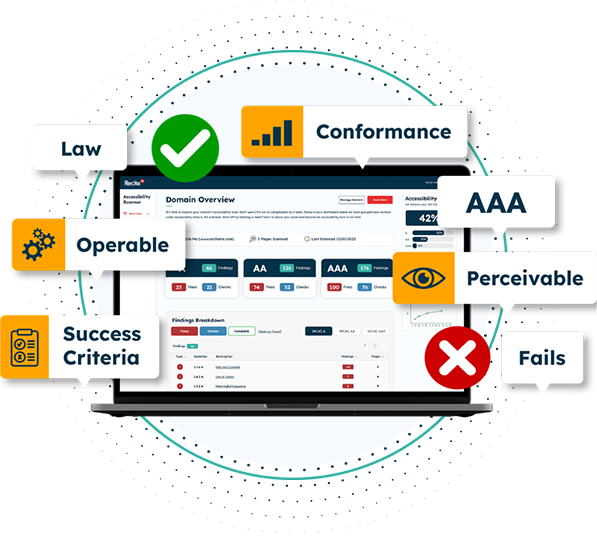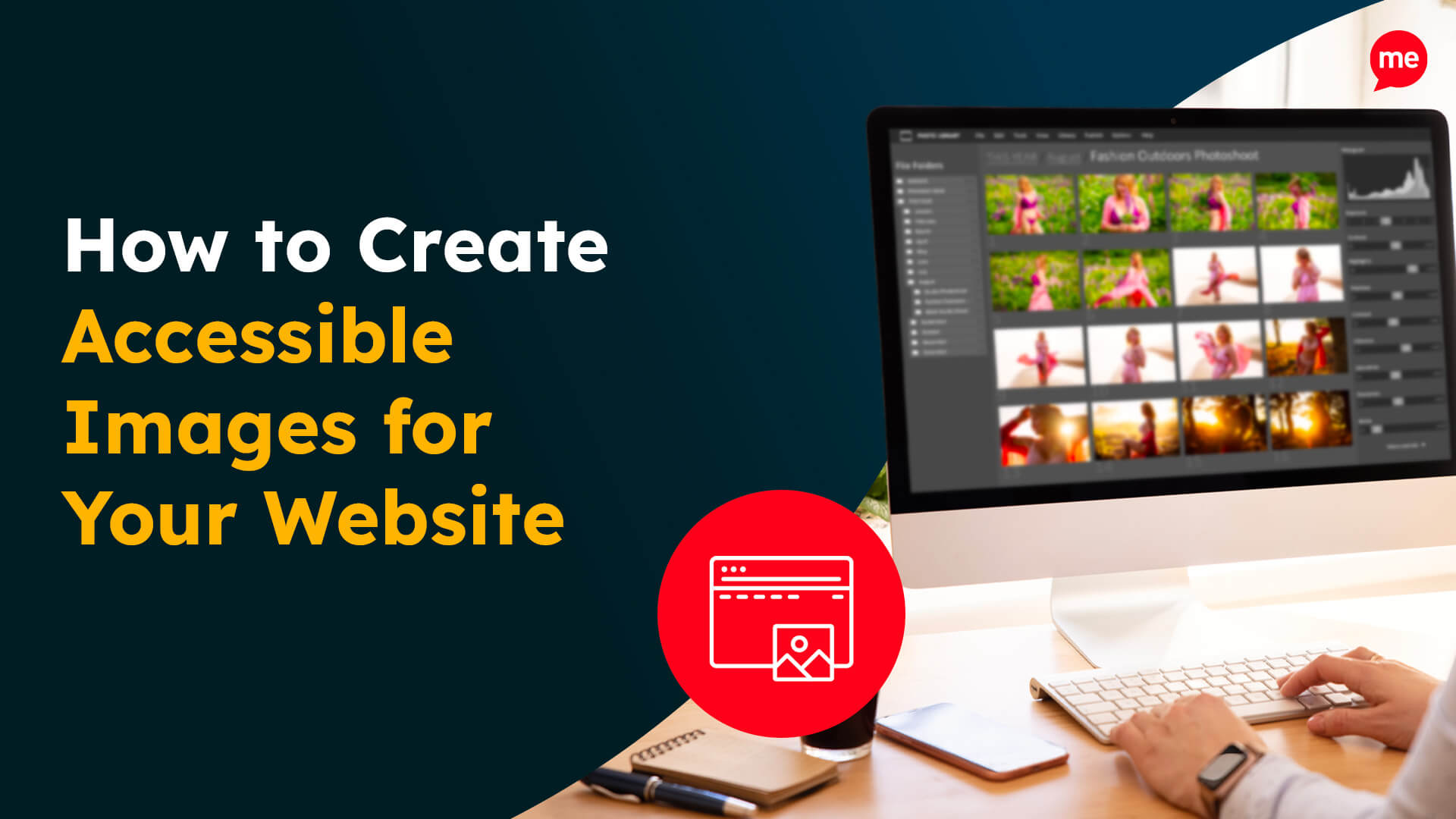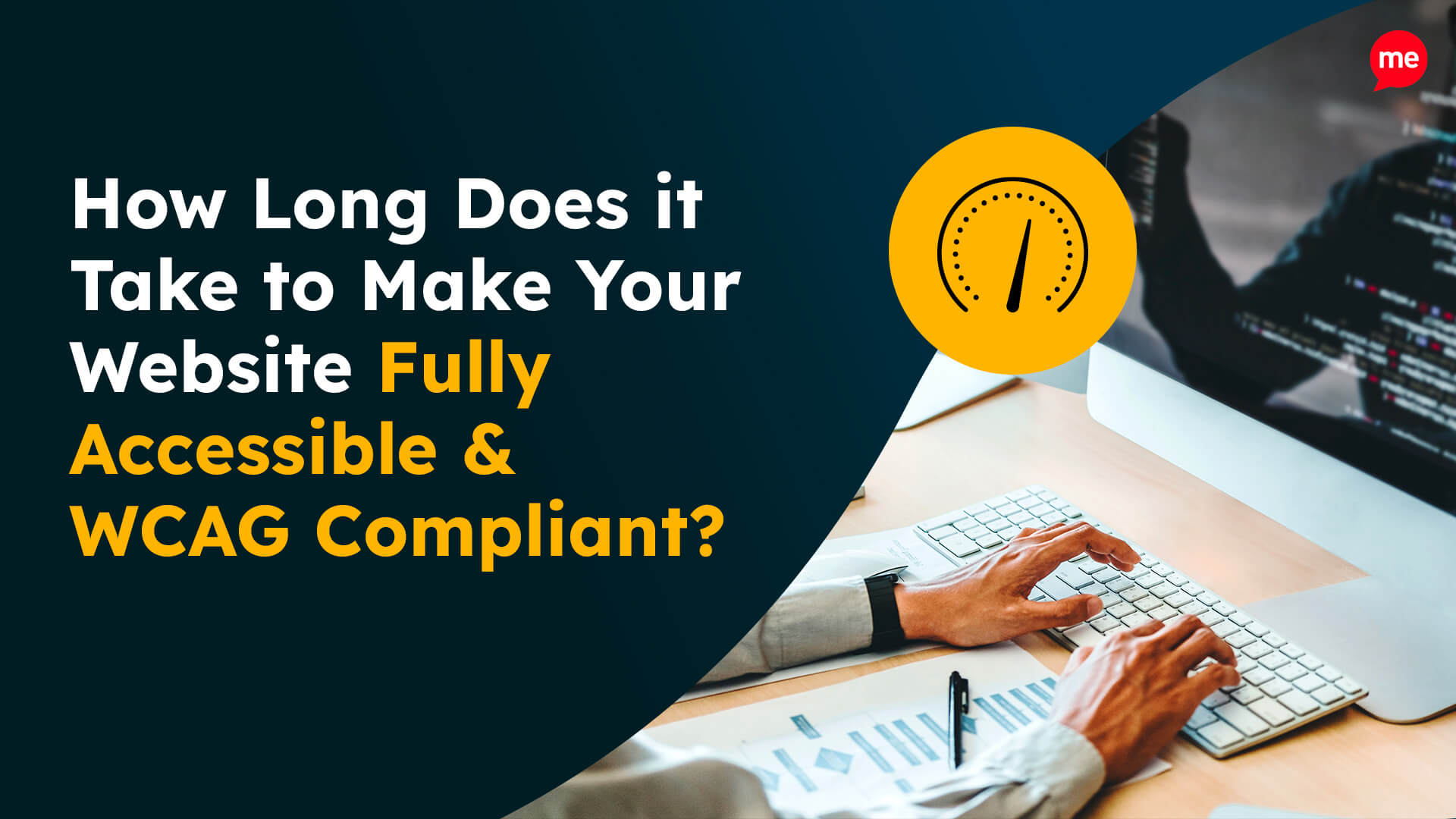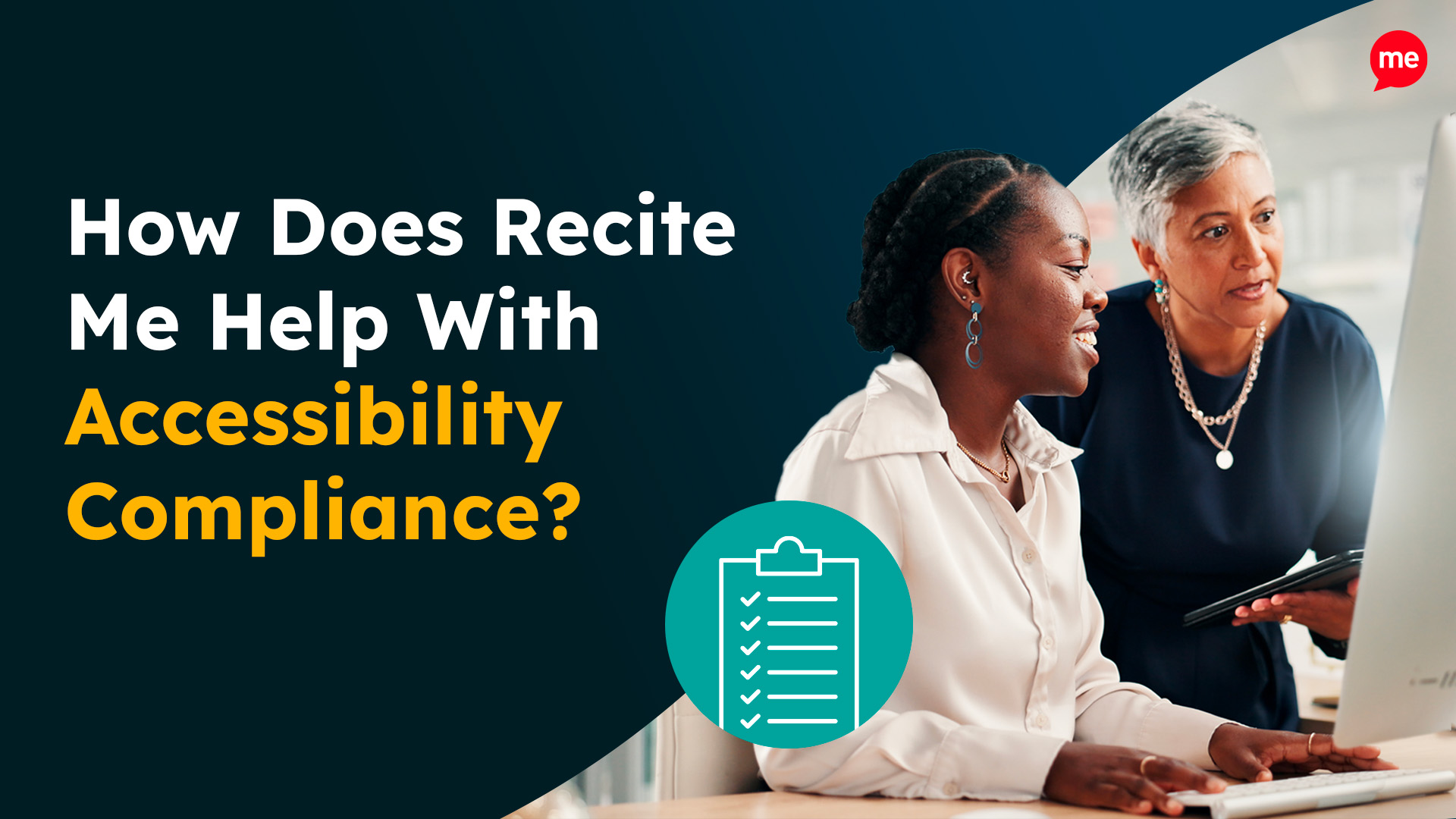Get Your Free Accessibility & Inclusion Toolkit
Download NowDiversity and inclusion (D&I) are more than just corporate buzzwords. If backed up with key D&I practices, they become representative of an organisation’s values, helping to drive innovation and employee satisfaction whilst setting the foundations for a healthier society in general. This article discusses the importance of diversity and inclusion in the modern world and offers guidance on 10 actionable steps to boost D&I in your organisation.
What is Diversity?
Diversity refers to the presence of differences within a given setting. In the context of a workplace, for example, diversity might refer to the wide range of characteristics, perspectives, and experiences that form when people of different race, ethnicity, gender, age, religion, disability, sexual orientation, education, and socioeconomic background are brought together.
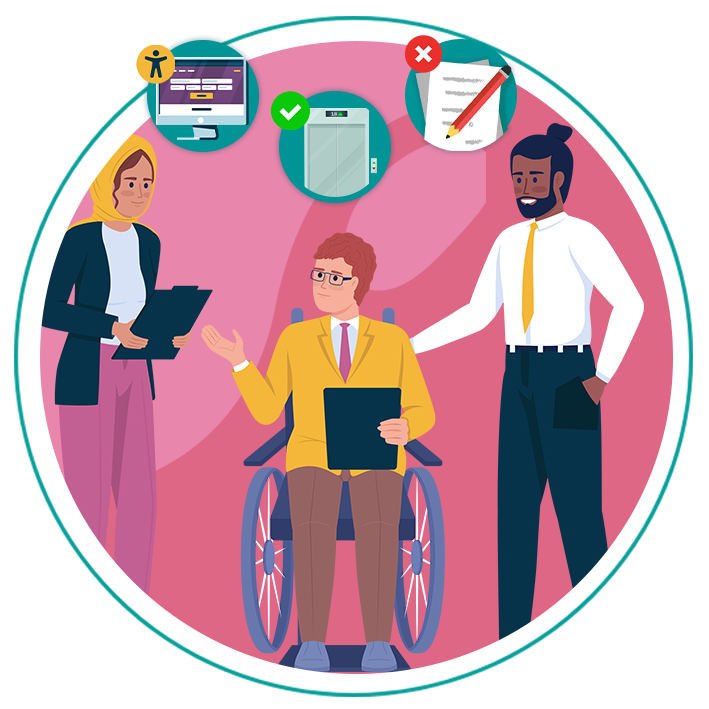
Diversity is largely about giving a voice to historically marginalised groups by ensuring equal access to opportunities for all. However, diversity transcends mere statistical representation. It cultivates the perfect environment for generating unique ideas and novel solutions by bringing to the table a broad spectrum of worldviews and belief systems.
Each member of a team offers ideas based on their unique experience. If all team members have had the same, or similar, experience, then the scope for variance is rather limited. On the other hand, if each team member has a unique background with unique experiences, then creativity tends to flow.
What is Inclusion?
Achieving a good level of diversity in your organisation is a great milestone, but the work is not done yet. Whilst diversity brings a wide range of voices to the table, inclusion makes sure those voices can be heard. To put this into context, imagine that you have just changed your recruitment policies to ensure disabled individuals have access to your organisation. This is great, but if your facilities are not adapted to their needs, then how can they participate in the same way as everyone else?
With that in mind, inclusion is the practice of cultivating an environment in which every individual feels welcomed, respected, supported, and valued. It removes barriers to participation such that every individual, once in your organisation, is able to contribute on a level playing field.
It is about offering services that are tailored to the needs of specific groups. For instance, making provisions to accommodate for various cultural holidays or offering tools, such as Recite Me’s Accessibility Toolbar, to support non-English speakers or those with visual impairments.
Our 40-page Digital Accessibility & Inclusion Toolkit helps businesses break down online barriers and make a real impact. It offers practical advice on all aspects of digital accessibility, from writing an accessibility statement to accessible website tips and inclusive hiring.

Top 10 Diversity and Inclusion Best Practices
1. Encourage Diverse Leadership
In almost every organisation, a top-down approach to implementing change is required. Therefore, seeking out diverse leadership should be your first port of call. After all, it takes a diverse group of people to truly understand the needs of one.
In order to build a diverse leadership, underrepresented groups need to be actively supported in their pursuit of attaining leadership roles. Making sure you have an accessible website through which disadvantaged individuals can apply for such roles is a vital first step. It attracts a diverse mix of job applicants from people who may have otherwise not been able to apply to your organisation, encouraging diversity as a result.
Other ways to encourage diverse leadership might be through schemes such as, leadership development programs, mentorship initiatives, and sponsorship opportunities that target underrepresented groups. An organisation might choose to set up a Women in Leadership program, for example, where the objective is to help women get into leadership positions through things like executive coaching and free leadership training workshops.
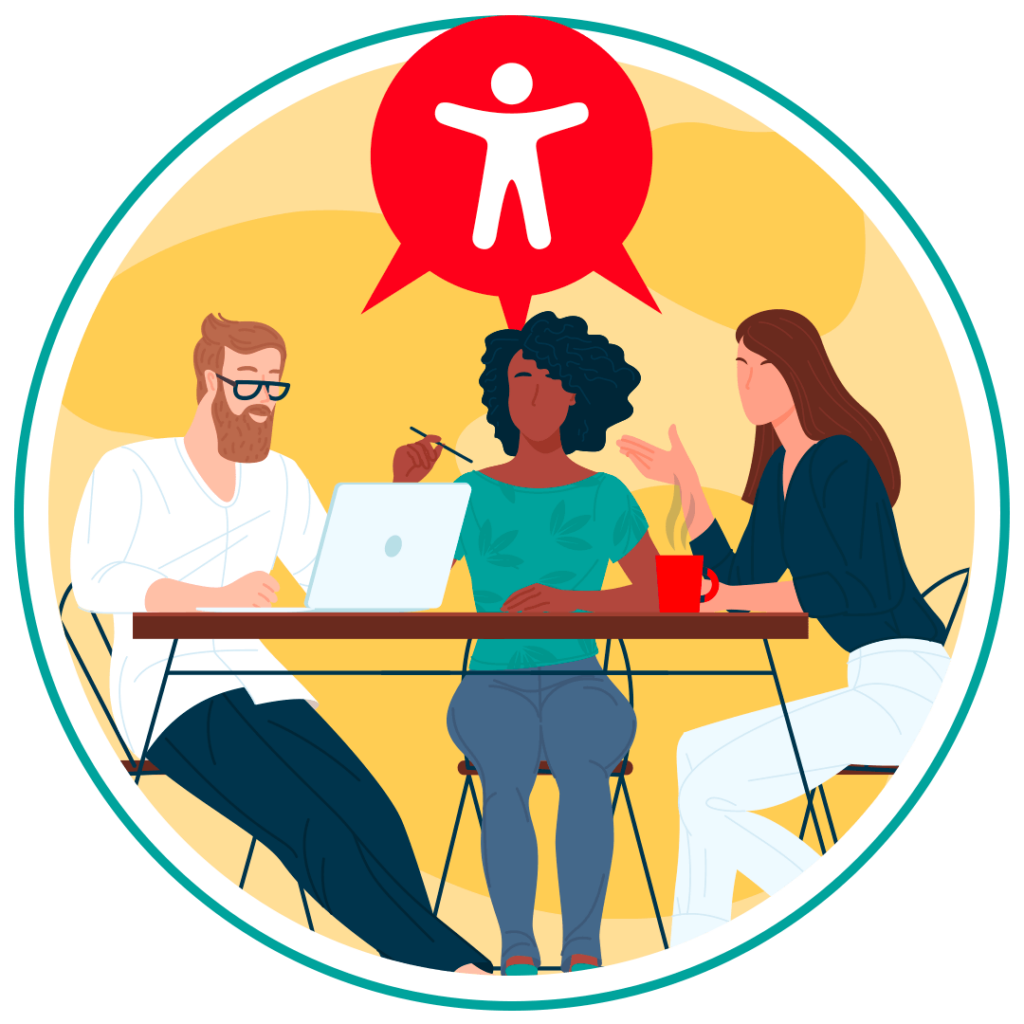
2. Set Clear D&I Goals
Setting clear and measurable diversity and inclusion goals provides a roadmap for organisations to track progress and hold themselves accountable. These goals should be specific, attainable, relevant, and time-bound.
An example of such a goal might be to increase the representation of women in leadership positions by 25% within the next three years. To achieve this, things like targeted recruitment strategies or leadership development programs, focused on supporting female employees, may be implemented.
3. Establish Leadership Commitment
Once a diverse leadership has been established and D&I goals agreed upon, the next step is to ensure a certain level of commitment to said goals. As discussed earlier, improvements to D&I require a top-down approach, so the more dedicated the leaders are to D&I outcomes, the more of a precedent this sets for other employees to follow.
If the CEO of an organisation announces their commitment to D&I, it highlights to other staff members that D&I is a part of the organisation’s core values. In a similar way, if the CEO actively participates in D&I training and workshops, it helps them to better understand the challenges faced by underrepresented groups in their organisation, which can only be a good thing.

4. Accessible Website
In today’s world, every organisation needs a website. Without one, you stand at a significant disadvantage. Websites are the means through which prospective clients, students, members of staff, and more, can get to know your values, your services, and so much more.
Therefore, if you want to cultivate a diverse staff team, client base, student population, etc., it is essential that you prioritise an accessible website. What does this mean exactly?
An accessible website is one where the information and materials on said website can be viewed, read, and understood by everyone. This involves tearing down language barriers, providing information in alternative formats, and complying with the Web Content Accessibility Guidelines (WCAG), which are provided by the Worldwide Web Consortium (W3C).
Recite Me’s Accessibility Toolbar is a great example of how your website can be made more accessible, allowing website visitors to customise your site in a way that works best for them.
5. Measure and Report Progress
Once measurable D&I goals have been set, any progress towards achieving said goals should be tracked using specific KPIs in order to maintain accountability and avoid empty promises. More general reporting on topics like workforce demographics and leadership level representation is equally important. If shared with members of staff and the wider community, it helps to cultivate a sense of trust and transparency between the organisation leaders, their staff members, and the general public.
6. Conduct Regular D&I Training
Training programs on diversity, inclusion, cultural competency, and unconscious bias are essential for promoting awareness, understanding, and empathy among staff members.
Training sessions could take many forms; for instance, a quarterly interactive workshop on unconscious bias where participants are challenged on how to mitigate biases in their decision making processes, such as recruitment and performance evaluations.
7. Create Employee Resource Groups (ERGs)
Employee Resource Groups (ERGs) are voluntary, employee-led groups that provide support, networking opportunities, and advocacy for underrepresented communities within a given organisation. ERGs empower the groups they represent by giving them autonomy in how it is run. As well, they foster a sense of belonging and provide plenty of opportunity for professional development.
An ERG could be established for women in tech or LBTQ+ members of staff, as an example. The group might choose to host networking events or use their influence to advocate for inclusive policies, such as gender-neutral toilets. Either way, they are given the moral, and often financial, backing of the organisation to advocate for their group in whichever way they see fit.
8. Implement Inclusive Policies
Inclusive policies are those which aim to build a more inclusive culture, encompassing everything from more equitable recruitment practices, to ensuring fair compensation across race, gender, and other protected characteristics.
One example of an inclusive policy might be to remove bias from the job selection process by implementing blind CV screening. Here, identifying information, such as name and gender, are removed from the applicants’ CVs to mitigate, as much as possible, the effects of unconscious bias.
You can see how inclusive your hiring processes are with our inclusive recruitment checklist.

9. Promote Pay Equity
Promoting pay equity is all about ensuring that members of staff are fairly compensated for their work, regardless of gender, race, or other protected characteristics. Central to this practice is conducting regular pay audits, establishing transparent salary structures, and addressing any disparities that are uncovered as a result.
10. Create a Safe Space for Dialogue
Forums, town hall meetings, and anonymous feedback channels are all means of promoting discussion around diversity and inclusion. Having dedicated time slots with a dedicated D&I agenda helps to create a safe space where people within your organisation can share their own ideas or lived experiences.
A company might choose to host monthly ‘Diversity Dialogues’ where employees can discuss sensitive topics related to diversity and inclusion in a safe environment without judgement. These types of discussions could be centred around how to promote understanding among participants and may even feature a trained moderator to facilitate the discussions.
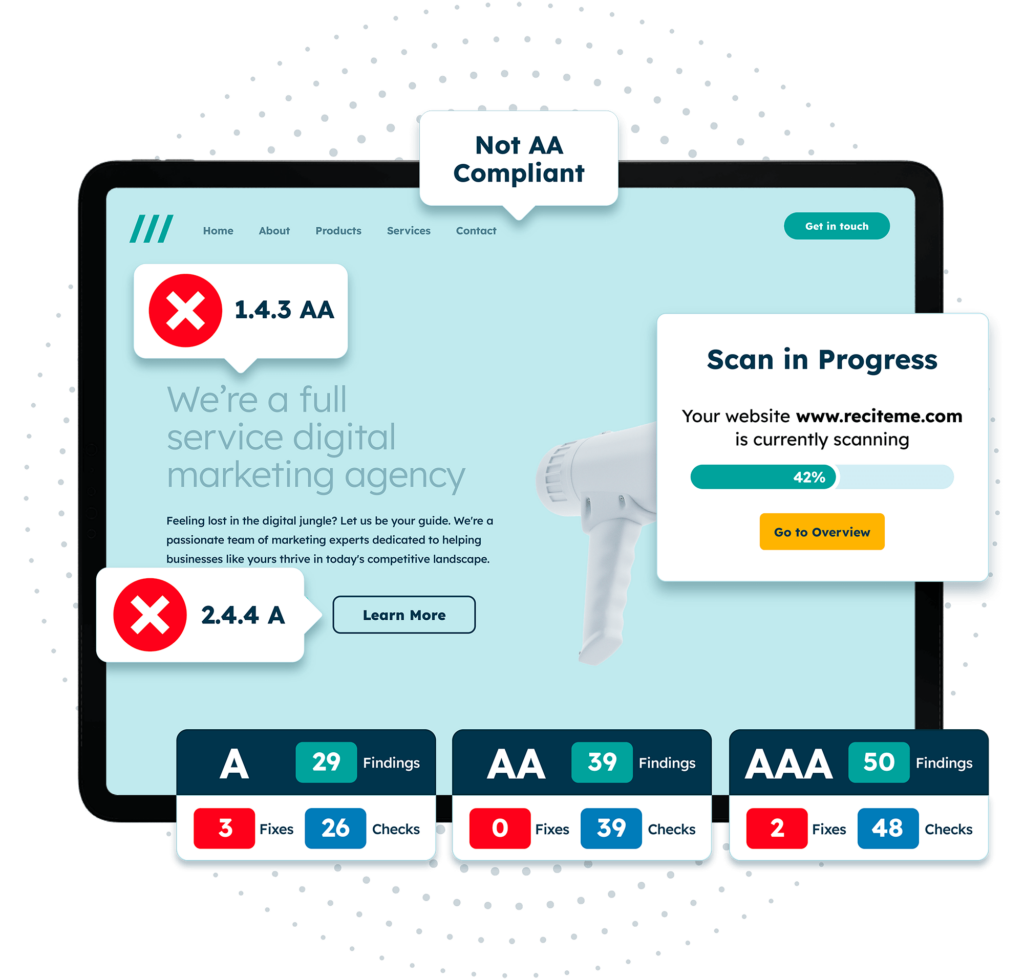
Free Accessibility Check of your Website
Finding accessibility issues is now easier than ever. Recite Me offers a free automated scan of your website’s homepage to highlight non-compliance. You’ll get recommendations on how to fix them, helping to improve your accessibility score.
The Importance of implementing Diversity and Inclusive Best Practices
Implementing diversity and inclusion best practices is crucial for organisations, their employees, and society as a whole. They form the foundations necessary for a fair, innovative, and judgement-free space; the result being a happy workforce, a productive organisation, and a healthy society. Some of the key business cases for Diversity and Inclusion best practices include:
- Innovation: Diversity brings unique perspectives, leading to innovative solutions and improved problem-solving, helping tech companies reach wider audiences and create user-friendly products, enhancing market competitiveness.
- Brand Reputation: D&I practices enhance an organisation’s public image, attracting a broader customer base and strengthening loyalty and employer branding.
- Productivity & Employee Retention: Inclusive workplaces improve employee participation, engagement, satisfaction, retention, and productivity, with initiatives like flexible working hours, cultural accommodations, and accessible websites being key contributing policies.
- Societal Impact: D&I practices extend to society, breaking down systemic inequalities like unequal pay through transparent salary structures and manager training, reducing discrimination, and fostering a more empathetic and welcoming society.
Tools to Help Improve your Organisations Diversity and Inclusion
At Recite Me, we help organisations from all around the world become more inclusive with our range of accessibility tools, aiding major brands across the world in a variety of different ways.
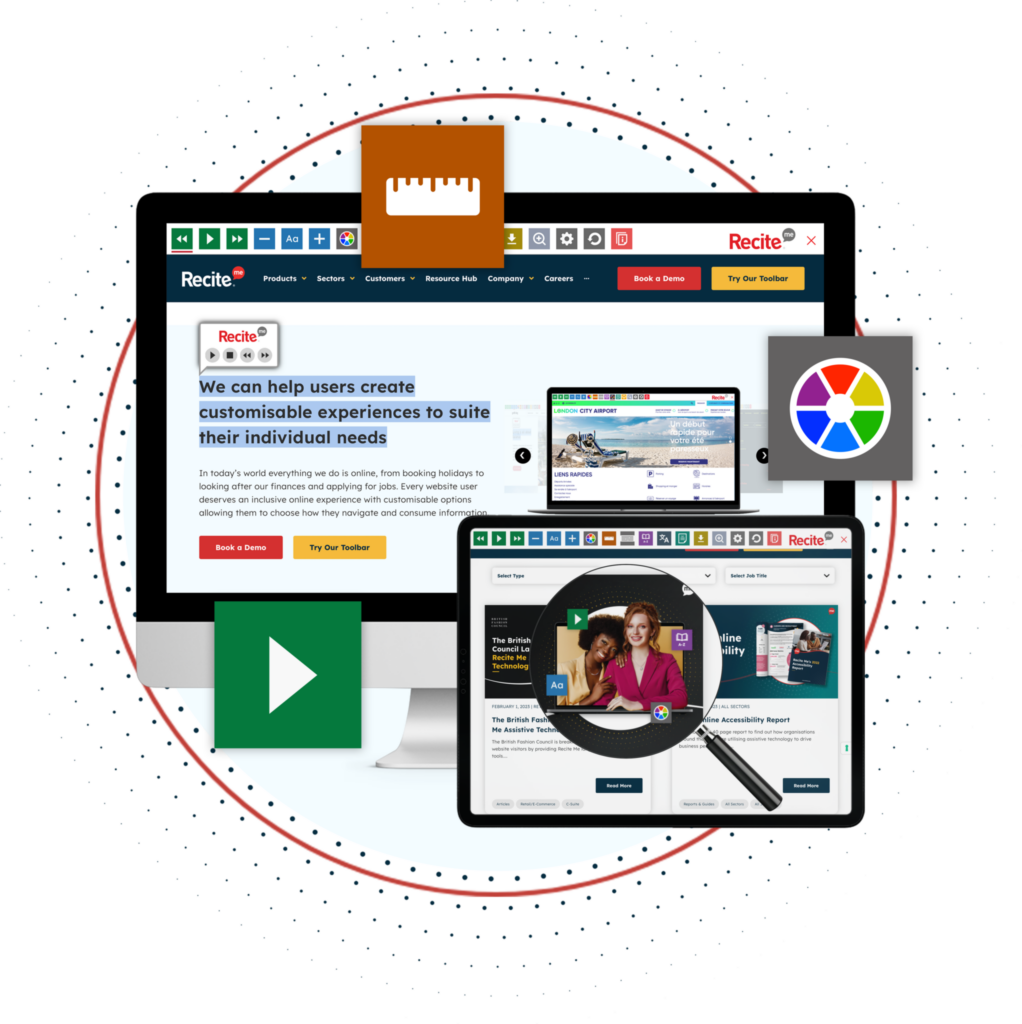
Accessibility Toolbar
Our Accessibility Toolbar is our longest standing product, it works by integrating with a wide variety of different websites. Once integrated, the toolbar can be used for a variety of different functions, mainly allowing the user to customise the website to suit their needs and preferences. Some of the Toolbars main features include:
- Personalise font size, colour and type.
- Screen Mask & Ruler tools for reading.
- Download written content as an audio file.
- Text-to-speech.
- Translation to over 100 languages.
- Customising PDF documents.
Accessibility Checker
Our Recite Me Accessibility Checker is a tool that website owners can use to highlight and fix inaccessible web design. The tool works by taking the URL of your website and performing a scan of the domain. The checker will then pull a report of accessibility issues into an actionable list, with suggestions and recommendations to help you resolve the issues. The step by step process of the checker is as follows:
- Step 1: Scan Your Domains
- Step 2: Identify Accessibility Issues
- Step 3: Fix Accessibility Errors
- Step 4: Track Your Progress
- Step 5: Download & Share and Accessibility Report
